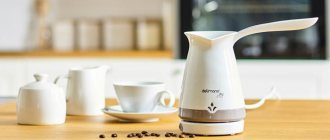Features of the lifestyle of diabetics
Proper lifestyle management in general, dietary changes and dosed exercises allow you to take control of blood glucose concentrations, preventing its serious fluctuations - hypo- and hyperglycemia.
Taking into account all the contraindications for type 1 or 2 diabetes, rationally combining medications, insulin injections with food and drink, and rational exercise, you can reduce the risks of serious complications of the disease, including damage to the kidneys, eyes, cardiovascular system, peripheral nerves and feet.
Initially, it may seem that leading a healthy lifestyle with diabetes is difficult, but in reality, the changes have a very positive effect on the condition, it is not difficult to comply with them, and there are not many real prohibitions and contraindications to certain foods, drinks and actions for diabetes.
A rational diet and regular dosed physical activity as part of a healthy lifestyle for diabetes help:
- maintain stable sugar levels;
- control blood pressure, cholesterol and other plasma lipid concentrations within target parameters;
- reduce body weight and maintain it in a healthy range;
- completely prevent or seriously reduce the risks of complications of the disease.
This allows you to lead a normal life, not suffer from poor health, and have more strength and energy.
Beneficial properties of coffee
Coffee beans are a low-calorie product, which is very important for diabetics. In addition, it contains many substances valuable to humans, in particular:
- linoleic acid – indicated for people suffering from various cardiovascular pathologies;
- caffeine and theobromine are plant alkaloids that have a stimulating effect on the nervous system and tonic the body;
- pectins are essential dietary fibers that ensure the formation of normal stool and its easy evacuation from the intestines;
- chlorogenic acid – accelerates the breakdown of fat cells and has a beneficial effect on metabolism;
- B vitamins – improve the functioning of the nervous system as a whole;
- Vitamin P – has a positive effect on the condition of the walls of blood vessels.
The grains also contain compounds that have anti-inflammatory properties. Therefore, high-quality coffee helps not only to cope with banal inflammatory processes faster, but also to recover more quickly after surgical interventions.
Nutrition for diabetes
Many are concerned about possible prohibitions and contraindications for consuming certain foods for type 1 or type 2 diabetes. But approaches to nutrition have undergone significant changes over the past 20-30 years, and many of your favorite foods can be eaten, but done less often and in small portions. The basis of nutrition for this pathology is healthy, whole and varied foods containing as few light carbohydrates as possible. The diet is selected individually for each patient, taking into account his preferences and characteristics of the disease.
Among the recommended product groups, certain selection features can be emphasized:
- Non-starchy vegetables - tomatoes, carrots, different varieties of cabbage, peppers, herbs. Starchy vegetables such as peas, potatoes, and corn can be added to the diet in smaller quantities.
- Healthy fruits, even sweet ones, since in addition to sugar they contain fiber, which slows down its absorption.
- Half of the grain diet per day should include whole grains. Processed grains and flour products need to be reduced.
- It is important to consume enough protein - meat, fish, poultry, dairy products.
- The diet should include eggs, nuts, seeds, and legumes.
- Products containing unsaturated fats are beneficial for the cardiovascular system. These are vegetable oils, seeds and nuts, sea fatty fish, avocados. When preparing food, you should avoid frying with butter, lard, margarine, and reduce sour cream and cream to a minimum.
Results
Diabetes and coffee are quite compatible concepts. With persistent compensation of the disease, the drink can be consumed twice a day. You should choose coffee beans for your daily menu and prepare the drink yourself, taking into account diabetic recommendations, the main ones of which are:
- use of spices;
- drinking not too strong coffee;
- eliminating sugar during cooking (stevia is the best replacement);
- refusal of coffee after 18 hours with unstable glycemia, with elevated blood pressure, in a state of anxiety (nervousness).
Absolute contraindications are decompensation of diabetes, hypertension, tachycardia (and other heart diseases), dysania, vascular complications, and stomach ulcers.
Restrictions for diabetes: foods and drinks
There are a number of foods or certain drinks that should be sharply limited in the diet or completely eliminated. These include fatty foods rich in animal, saturated and trans fats. It is also important to reduce foods that contain a lot of salt, sugar (sweets, sweet pastries), soda and boxed juices, sports energy drinks. It is useful to drink plain water instead of sweet drinks, and use sweeteners when drinking coffee or tea. It is worth sharply reducing the amount of alcohol or completely abandoning it - it provokes sharp fluctuations in blood sugar.
Meal schedule
Many people are advised to adhere to a certain diet, eating food at approximately the same time every day. But a more flexible approach to nutrition is also acceptable, depending on the type of diabetes and the medications prescribed to control it. It is important to receive a certain, approximately equal amount of carbohydrate components with each meal. The only thing you can’t do if you have diabetes is fasting for a long time, especially while taking medications or insulin. This threatens the development of hypoglycemia, even coma.
Correctly determined portion sizes are also important to control blood sugar and your weight. You need to discuss the nuances of nutrition with your doctor, use useful smartphone applications that help create a diet for diabetics.
What sweeteners are allowed?
Sweeteners are sugar substitutes whose production began in the 20th century. Modern drugs are almost harmless. There are two types of sweeteners:
- Natural sweetener (sorbitol, xylitol, stevioside, fructose). Obtained by heat treatment of plants. When they are consumed, the body produces a small amount of energy. You cannot take more than 4 g per day. For diabetes and obesity, a doctor's consultation is necessary.
- Artificial sweetener (aspartame, saccharin). When substances decompose, the human body does not absorb energy. These substitutes are sweeter than glucose, but the calorie content is zero. The drugs are great for people with diabetes.
According to research, sucralose and stevia cannot cause the development of negative reactions. Due to their safety, no processes in the body change after their use.
Exercise and activity
It is equally important for patients with diabetes to be physically active. Glucose is the main fuel for muscles; due to regular exercise, it is actively consumed, and its level in plasma is maintained lower. In addition, exercise helps maintain overall health and good mood, strengthens the heart and blood vessels, and helps more actively deliver oxygen to tissues.
Physical activity includes traditional exercise such as swimming or playing football. But there is also household activity - you need to move around the house more or use the stairs instead of the elevator. It all matters.
Some people worry that physical activity will be too strenuous or that it will make diabetes management more difficult. And if hypoglycemia occurs frequently, patients worry that their blood sugar will drop sharply. But activity doesn't always lower your blood sugar—it can also cause it to rise.
There is no one activity that is suitable for everyone with diabetes. It's about finding what works best for a particular patient. It is best to combine different activities because they have different benefits. And doing the same thing will get boring after a while.
For example, swimming can increase your breathing and increase your heart rate. This is good for heart health because it has to work harder to pump blood around the body. And if you have diabetes, it's even more important to keep your heart healthy because diabetics are at greater risk for heart disease and other complications. But even gardening helps build strength and can help the body use insulin better.
Health Recipes
We present to you several options for preparing weak (as befits diabetics) coffee drinks, suitable for different life situations. A healthy approach to cooking grains will not only help nourish the body, but also lift your spirits.
Turkish coffee
To prepare, pour ground grain into a clean pot with a narrow neck, and then fill it with cold water. The proportions are 10 grams of coffee per 200 milliliters of liquid. That is, a tablespoon per standard cup. Next, place the Turk on low heat and cook, shaking slightly occasionally. So, when a foamy head forms on the drink, you are almost there. Did that same cap lift up? Your coffee is ready. Set the Turk aside and let it brew for about two minutes. During this time, the sediment will sink to the bottom, and only liquid will fall into your cup.
Americano
You will need to brew strong espresso in a coffee machine; I use about eight grams of grain per serving. After this, about 150 milliliters of hot water is added to the drink.
Coffee cocktail
Use espresso, cold milk and some ice in one glass. It turns out to be a refreshing summer iced latte.
Brewing green coffee
The brewing scheme is identical to Turkish coffee. A spoonful of ground grain per cup of water. Cook until foam appears.
Active lifestyle at home
It is useful to vacuum the house and wash the floors, and clean more often. If you need to start at an easier pace, you can try standing during TV commercials. If you can handle it, try standing for the entire commercial break and then walking in place during the commercial. You can gradually add one type of exercise at a time.
Even a small change in your daily routine (like going for a walk) will increase your activity and help you feel better about living with diabetes. Can:
- get off the bus one stop earlier;
- ride a bike;
- walk.
If you have diabetes, it is very important to stay active at work, especially if you have to sit in front of a computer for long periods of time. Useful:
- climbing stairs;
- walking meetings;
- standing while a person is talking on the phone;
- Chair exercises such as bending and raising your arms.
conclusions
- The activity of the CYP1A2 enzyme is influenced by various factors, but high caffeine intake plays a major role.
- The predicted enzyme activity and therefore the rate of caffeine metabolism is significantly higher in the type 2 diabetes group, which may be due to higher caffeine intake.
- Given the small sample sizes, the results should be considered preliminary and require confirmation in larger populations.
Source:
- Urry E, Jetter A, Landolt HP. Assessment of CYP1A2 enzyme activity in relation to type-2 diabetes and habitual caffeine intake. Nutrition & Metabolism
. 2016;13:66. doi:10.1186/s12986-016-0126-6.
How exercise affects blood sugar levels
Physical activity can have different effects on blood sugar levels, depending on what the person with diabetes does. Many people don't want to exercise because it lowers their blood sugar. Not all types of exercise lower blood sugar; some cause it to rise. Therefore, it is important to follow a number of rules.
The best time to exercise is one to three hours after a meal, when blood sugar levels may be higher. If a person takes insulin, it is important to check their blood sugar levels before exercise. If your pre-workout level is below 5.5 g/L, eat a piece of fruit or have a small snack to boost your blood sugar and avoid hypoglycemia. Testing again after 30 minutes will show whether your blood sugar levels are stable. It's also a good idea to check your blood sugar levels after any particularly strenuous workout or activity. If the patient is taking insulin, the risk of hypoglycemia may be greatest 6 to 12 hours after exercise. Experts also warn against exercise if a person's blood sugar levels are too high (more than 13.8 g/L) because exercise can sometimes raise blood sugar levels even higher.
Because of the dangers associated with diabetes, a medical alert bracelet should always be worn indicating that the patient has diabetes and is taking insulin. You should also keep glucose lozenges or tablets with you during your workout in case your blood sugar levels drop sharply.
Contraindications
Despite the beneficial properties of black and green coffee, drinking it is not recommended for some people. You should pay attention to the fact that the drink helps wash calcium out of the body, increases anxiety, increases blood pressure, can cause stomach upset and even cause allergic reactions.
People of the following categories should not drink it:
- minor children;
- elderly people over 65 years of age;
- patients with cardiovascular diseases;
- persons who take sedatives.
If you can’t drink coffee, then a drink made from chicory roots can be a good alternative.











